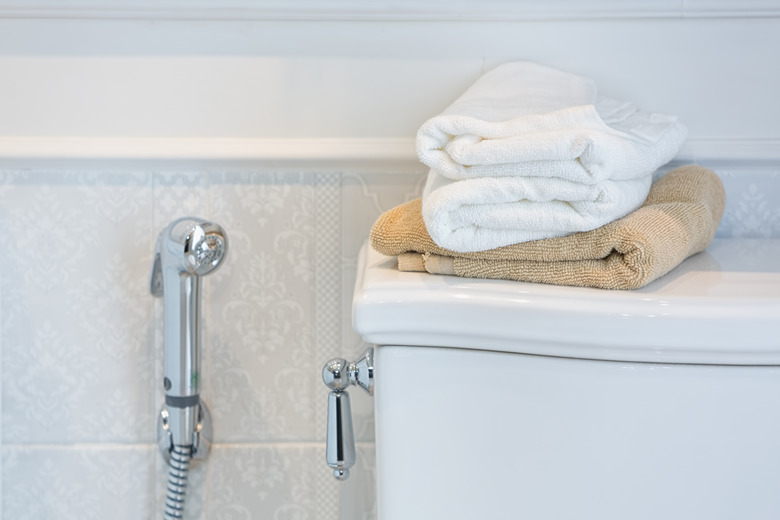Will Vinegar Harm Any Part Of A Toilet Tank?
We may receive a commission on purchases made from links.
Dirt, grime, and water stains not only affect your toilet's bowl and seat, but also your toilet's tank and inner components. The inner components and jets within the bowl can become clogged with mineral deposits as well as become stained by the deposits. One way to keep your toilet clean and functioning properly is by adding vinegar to the tank — but can it be harmful to your toilet? Here's what you need to know.
Is Vinegar Harmful to Your Toilet?
Is Vinegar Harmful to Your Toilet?
Vinegar will not harm your toilet's tank, bowl, or inner components. In fact, the substance is safe to use and removes dirt, grime and mineral stains, and it deodorizes toilets without the need for purchasing and using a commercial toilet cleaner.
How to Clean a Toilet With Vinegar
How to Clean a Toilet With Vinegar
- Fill a spray bottle with full strength vinegar.
- Spray the substance on your toilet's interior and exterior surfaces, and scrub vigorously to remove debris.
- For more than just a surface cleaning, add 3 cups of vinegar to your toilet's tank and let it stand for 30 minutes before flushing to clean your toilet.
If your toilet is badly stained and needs a deeper cleaning, opt for a more thorough method:
- Empty the toilet tank by turning off the valve at the wall behind the toilet and flushing; you may need to flush more than once to empty the tank completely.
- Fill the tank with vinegar, which may require several gallons, and let it sit for 12 hours before flushing.
- Turn on the water and flush the toilet several times.
Tip
Vinegar doesn't harm the environment, and it's a biodegradable alternative to other cleaning products including bleach, powdered detergents and cleaners. Vinegar is also safe for septic tanks and drainfields. In addition, you can mix vinegar with baking soda to form a cleaning paste to remove stubborn stains that persist after spraying or soaking the tank with pure vinegar.
Toilet Components Cleaner
Toilet Components Cleaner
If any of your toilet's internal components are not working properly, disassemble the parts and clean them with a brush dipped in vinegar or with a paste made of vinegar and baking soda. Vinegar breaks up lime, dirt and any grime that may be clogging the components.
How to Remove Mineral Deposits With Vinegar
How to Remove Mineral Deposits With Vinegar
Vinegar also penetrates and breaks down any mineral deposits in your toilet's tank and bowl. Here's how to remove mineral deposits with vinegar:
- Fill the bowl with water from a bucket to get rid of as much water as possible from the bowl. Do not flush the toilet—you want to remove the water manually using a bucket of water.
- Dry the bowl with an old towel or rag.
- Cover the hole in the bottom of the bowl and any jets around the edge of the bowl with waterproof tape.
- Pour a bottle of white vinegar into the tank's overflow pipe (the tall pipe inside the tank that contains a flapper on the bottom).
- Let the vinegar stand overnight so the substance can soften and breakdown the deposits.
- Remove the tape and flush the toilet to clean the jets and internal components.
